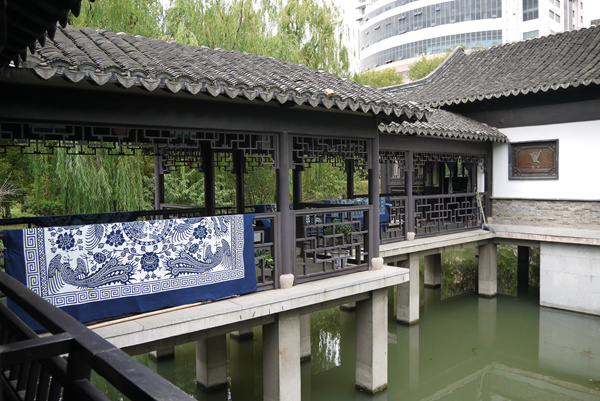

Blue calico was used by people across China. The blue cloth has patterns in white and the white cloth has patterns in blue. After the founding of the People's Republic of China in 1949, more colorful cloth, introduced from foreign countries, gradually replaced the traditional blue, and most dyehouses dedicated to the craft closed.
But, crucially, not all. Many in Nantong city, Jiangsu province, didn't halt production, since the blue calico made in factories there continued to be exported to Japan. In the 1970s, Ni's future father-in-law, then 17, whose family income came from dyeing and selling cloth, was recruited by a factory. After years of working and researching, he opened a blue calico museum in Nantong to promote the craft.
In 2006, Nantong blue calico dyeing craft was listed as a national-level intangible cultural heritage, and Wu Yuanxin became a national-level inheritor of the craft.
"Blue calico features various patterns," says Ni. "The sophisticated combination of dots, lines and space can form auspicious patterns, and thus create a happy atmosphere."